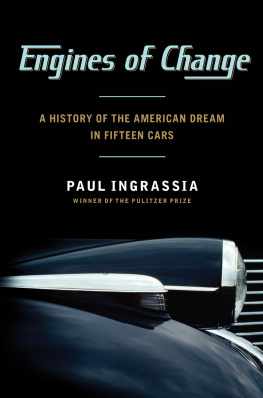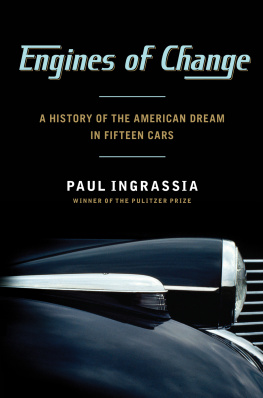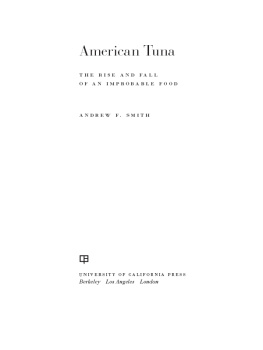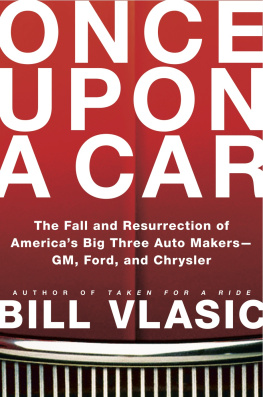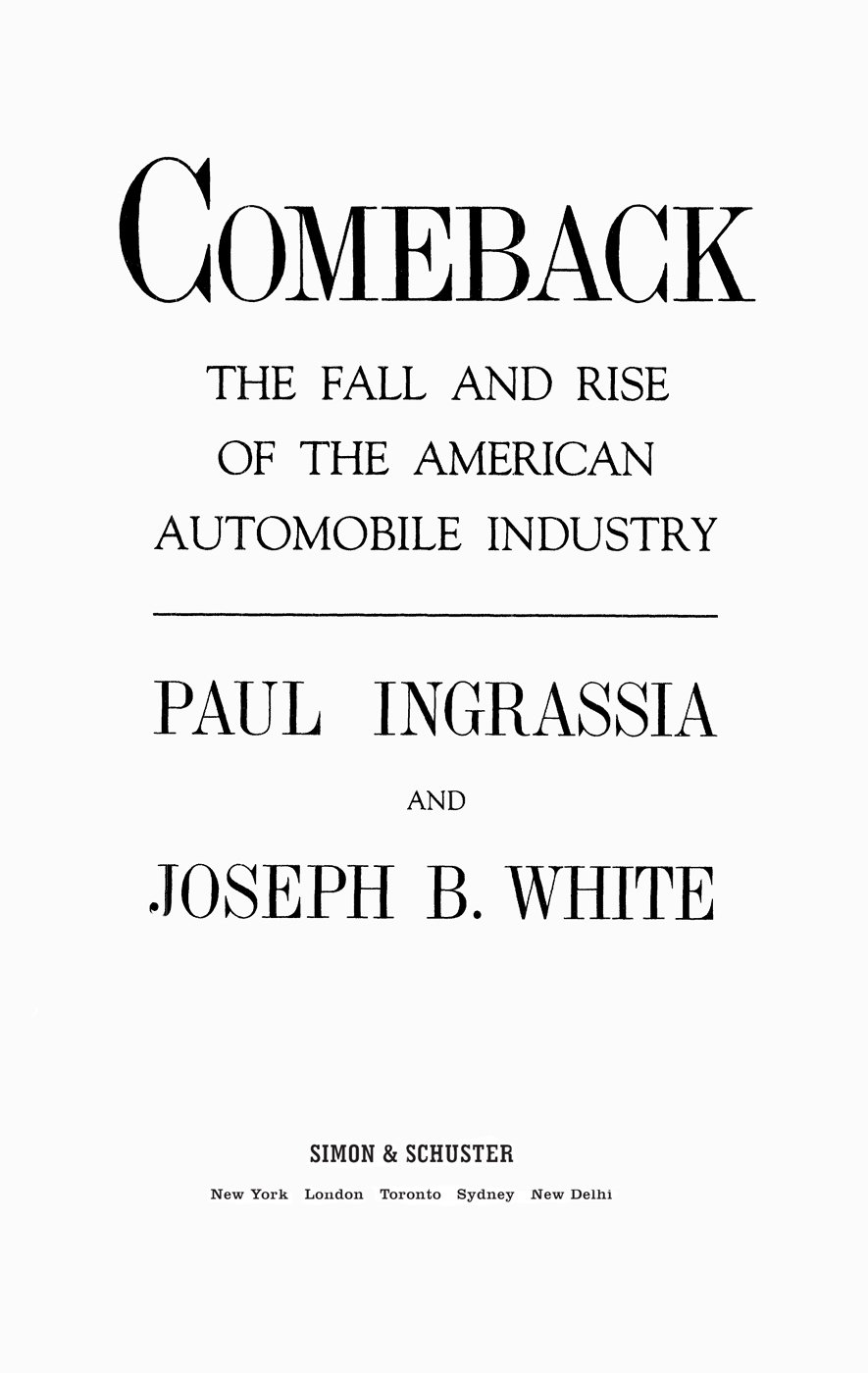Thank you for downloading this Simon & Schuster eBook.
Join our mailing list and get updates on new releases, deals, bonus content and other great books from Simon & Schuster.
C LICK H ERE T O S IGN U P
or visit us online to sign up at
eBookNews.SimonandSchuster.com
We hope you enjoyed reading this Simon & Schuster eBook.
Join our mailing list and get updates on new releases, deals, bonus content and other great books from Simon & Schuster.
C LICK H ERE T O S IGN U P
or visit us online to sign up at
eBookNews.SimonandSchuster.com

Simon & Schuster
Rockefeller Center
1230 Avenue of the Americas
New York, New York 10020
www.SimonandSchuster.com
Copyright 1994 by Paul Ingrassia and Joseph B. White
All rights reserved,
including the right of reproduction
in whole or in part in any form.
First Simon & Schuster Edition 1995
S IMON & S CHUSTER and colophon are registered trademarks of Simon & Schuster Inc.
Designed by Irving Perkins Associates
Library of Congress Cataloging-in-Publication Data Ingrassia, Paul J.
Comeback: the fall and rise of the American automobile industry / Paul J. Ingrassia and Joseph B. White.
p. cm.
Includes bibliographical references and index.
1. Automobile industry and tradeUnited States. 2. Corporate turnaroundsUnited States. I. White, Joseph B. II. Title.
HD9710.U52I54 1994
338.4762920973dc20
94-22354
CIP
ISBN: 0-671-79214-8
ISBN-13: 9781476737478 (eBook)
0-684-80437-9 (Pbk.)
Portions of two quotations from The Way of Life According to Lao-tzu , edited by Witter Bynner, copyright 1994 by Witter Bynner, are reprinted by permission of HarperCollins Publishers, Inc.
T O S USIE , A DAM , C HARLES, AND D ANIEL
PI
T O L AURIE , K ATY , AND A NNIE
JBW
CONTENTS
PROLOGUE
T HIS IS AN A MERICAN success story, born of a close call with disaster.
It begins on July 24, 1990, at the retirement party of Roger B. Smith, who had spent the previous nine years running General Motorsright into the ground. In 1990, Japanese automakers dominated the world auto industry. Detroit was teetering. The next year, 1991, would bring record operating losses totaling $7.5 billion at the Big Three car companies. One man who saw disaster coming was Chryslers Lee Iacocca. The biggest booster of American automobiles was so pessimistic about his companys chances for survival that, right at the time of Roger Smiths party, he was secretly trying to sell Chrysler to the Italian automaker, Fiat. The merger failed to occur only because Fiat was even more convinced than Iacocca that Chrysler was headed for extinction.
But just three and a half years later, on January 18, 1994, a day the Motor City recorded a record low temperature of 16 degrees below zero, Chrysler set a record high. The company announced it had earned an unprecedented $777 million in the final three months of 1993. Before taxes, Chrysler had hauled in $1,727 for every car and truck it sold. This time some of the major Japanese automakers, notably Nissan and Mazda, were mired in red ink. Ironically, so was Fiat.
Profit, however, was just half the story. Chrysler was the envy of the auto industry around the world. No company had cars and trucks as stylish and as distinctive. No company seemed to understand so clearly what its customers wanted. Chryslers new Neon subcompact, launched a few days before the company released its record 1993 results, had shocked the Japanese by offering dual air bags, a sophisticated multivalve engine, and other standard features for a price thousands of dollars below theirs. No longer could Japan lay undisputed claim to leadership in small cars. Robert J. Eaton, who had succeeded Iacocca as chairman of Chrysler, announced that, just as Toyota had been the worlds best car company in the late 1980s, Chryslers goal was to assume that mantle for the late 1990s.
Chrysler was leading the American auto industrys revival, but it wasnt alone. General Motors and Ford, in different ways, were engineering comebacks of their own.
GM, the once all-powerful giant of American industry, had stumbled from blunder to blunder during the eighties. It had squandered billions on factories that wouldnt work while producing luxury cars that looked like economy cars, cars with engines that burst into flames, and cars afflicted with what company engineers glumly called morning sickness. By January 1992, the General stood closer than the world knew to the brink of collapse. Its management had lost touch with its customers and with reality.
GMs directors had watched their companys decline without uttering so much as a peep. They were the laughingstock of corporate Americapet rocks, in the memorable put-down of former board member Ross Perot, whose self-serving rebellion had led GM to spend $700 million to oust him in 1986.
In 1992, however, GMs directors finally woke up. They engineered a boardroom coup that swept out a generation of leaders wedded to the ways of the past. In the place of these men came a cadre of younger managers who looked outside their companys traditions for the ideas to build a new GM. The revolt at GM set a new pattern for accountability at the top of American corporations.
By the time Chrysler announced its record profits, GM executives had a comeback story of their own to tell. After losing more than $15 billion before taxes in its North American car business in 1991 and 1992, GMs domestic operations would show a pretax profit in 1993 for the first time in three years. As 1994 began, GM still had a long way to go on its road to recovery. But finally the company was moving in the right direction.
At Ford, change came clothed not as revolution, but as rediscovery. Ford had emerged from its brush with near-death in the early 1980s a far better companycertainly the best among the Big Three. It had stood the world on its ear in 1985 with the aerodynamic Taurus family sedan. But in the late 1980s, Ford lost its creative spark and its focus. Its leaders put money into banks and defense companies instead of engines, transmissions, and exciting new designs. By 1989 Ford had become so irresolute that its leaders were willing to let a Japanese company, Mazda, develop a successor to the quintessential American car, the Mustang.
Then a small group of middle managers launched a quest to save the Mustang, urged on by superiors who saw that giving away the creative heart of a company was the ticket to decline. Less than four years later, Ford was fielding a blizzard of orders for the new Mustang, and holding up the team that built it as an example for the rest of the company to follow.
How all this came about is the subject of this book. It covers a dozen years of upheaval and renewal in the American automobile industry. The story of these dozen years is largely of how GM, Ford, and Chrysler, after being humbled, adopted and adapted Japanese methods. Its a story filled with comedy, tragedy, and human foibles. The events span America, Japan, and Europe, while ranging from corporate boardrooms to factory floors. Some of the characters, such as Iacocca and Roger Smith, are well known. Others, such as Frank Faga and Bob Marcell, arent. But they did things that made a difference.
The watershed event that precipitated Detroits crisis and ultimately its revival occurred in November 1982. That is when Honda Motor Company started building cars in Marysville, Ohio. Just thirteen months later, Toyota followed by opening its first U.S. assembly plant as a joint venture with General Motors in Fremont, California. It was the Japanese, ironically, who showed that American workers could build quality automobiles, and thus stripped away Detroits excuses. The Japanese started a new American auto industry. And in the end, Detroit decided to join in.
Next page

